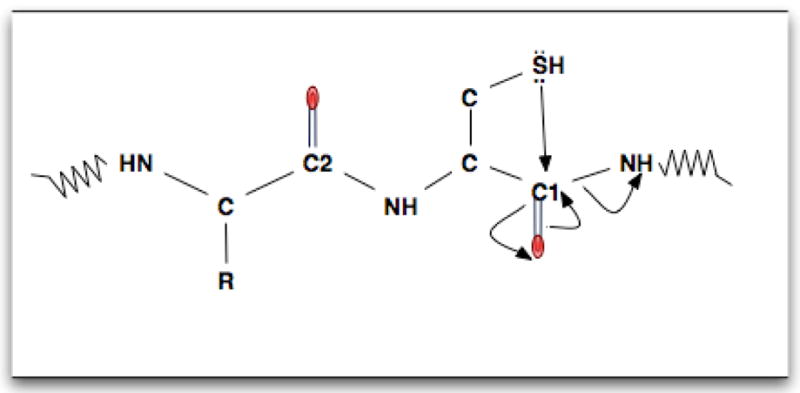Figure 4.

A model for the preferential C-terminal cleavage of cysteine. The formation of bond by the sulfhydryl group with the nearest neighbor carbonyl carbon atom (Cl) is more favorable than the formation of bond with the carbonyl carbon atom of the previous residue (C2). This facilitates the breakage of C-terminal cleavage of cysteine than the N-terminal cleavage. Electron transfer is shown by the arrows.
